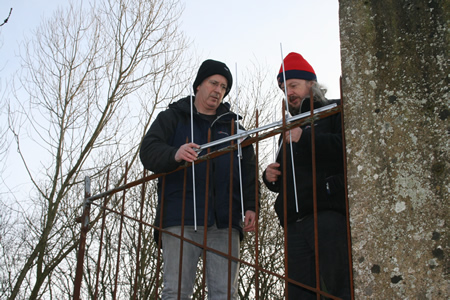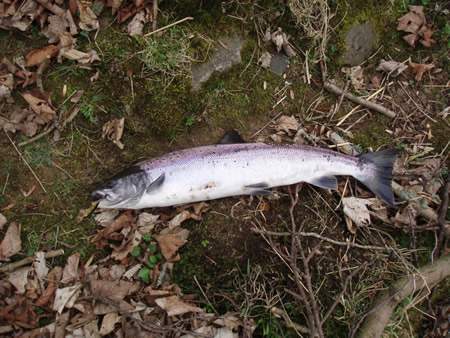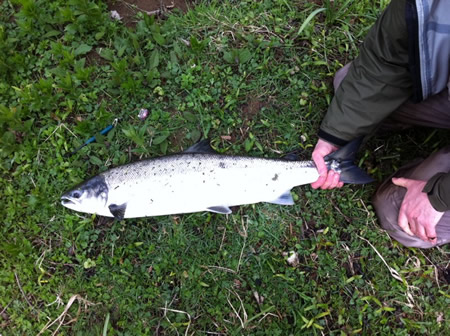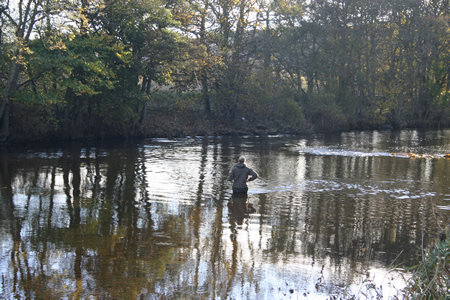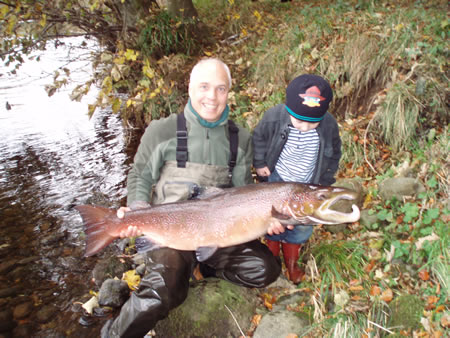These bulletin blogs represent news about Finavon and the South Esk, and my views as a riparian owner. They are not the views of any other organisation, nor are they designed to promote the interests of any individual or organisation other than Finavon Castle Water and factors affecting the fishery. Tony Andrews
These bulletins are not exclusively about FCW or the South Esk. I am lucky to be able to travel where the salmon swims to keep in touch with knowledgeable scientists and fishery managers. On the basis of what they tell me I try to relate what is happening in the Ocean with what they tell me about salmon returning to Finavon’s pools. Those fish are likely to be the multi sea winter salmon that return to the South Esk in the early months of the year, and again perhaps in the autumn. One day genetic mapping will give us the full picture.
Secrets of the salmon’s life revealed: As we open each new ‘casket’ of data provided by scientists, with their new instruments and methods of research, such as genetics, chemical analysis of scales and stable isotopes, we become aware of yet another facet of the extraordinary and awesome lives of these wild creatures. Believe it or not we can now re-enact the whole life history of a salmon that has returned to the South Esk by reading its scales and analysing certain tissue samples. We can work out where they have been, what they have eaten, how deep they have dived at sea, water temperatures and salinity, and, provided we know the precise length from the point of the head to the fork in the tail, the weekly growth rate and physical condition throughout the life of a salmon.
These new data come on top of the things we already know about salmon. The main contribution to our knowledge is coming from genetic analysis and mapping, which is starting to describe the ‘big picture’ about salmon (and sea trout) migrations and behaviour at sea. How extraordinary that we can put men on the Moon and send space probes beyond our galaxy, but we still don’t know how many salmon return to the South Esk each year, nor do we know how many smolts the river produces, nor what proportion of these smolts are salmon or sea trout. Isn’t it time we did?
Here are the catch returns for the 2012 season. While it is nothing over which we can particularly upbeat, in what I can only describe as a lacklustre season, FCW came out top for the South Esk in terms of catches of both salmon and sea trout with 137 salmon and 161 sea trout. 3 aspects of our 2012 catches stand out 1.The continuing quality and reasonable numbers of our spring salmon 2. The continuing improvement of sea trout runs. 3. The size and good physical condition of most of our MSW salmon.
Milton Beat
| Pools | Salmon | Sea trout |
| Bridge Pool | 1 | 0 |
| Tyndals | 26 | 13 |
| Willows | 22 | 32 |
| Upper Boat | 4 | 5 |
| Volcano | 8 | 8 |
| Lower Boat | 8 | 7 |
| Flats | 2 | 7 |
| TOTALS | 71 | 72 |
Castle Beat
| Pool | Salmon | Sea trout |
| Craigo Stream | 0 | 1 |
| Red Brae | 12 | 9 |
| Kirkinn | 1 | 2 |
| Pheasantry | 0 | 4 |
| Nine Maidens | 0 | 1 |
| Beeches | 5 | 5 |
| TOTALS | 18 | 22 |
Bogardo Beat
| Pools | Salmon | Sea trout |
| Haughs Pool | 6 | 10 |
| Harry’s Bar | 8 | 4 |
| Martin’s Cut | 1 | 1 |
| Tollmuir Pool | 1 | 3 |
| Steps & Toms | 1 | 1 |
| House Pool | 4 | 9 |
| TOTALS | 21 | 28 |
Indies Beat
| Pools | Salmon | Sea trout |
| Melgund Pool | 2 | 8 |
| Frank’s Stream | 7 | 17 |
| Indies Pool | 18 | 14 |
| TOTALS | 27 | 39 |
Smolt production: comparing two rivers.
If you compare the total numbers of smolts produced by the North and South Esks one might speculate that the two rivers produce similar numbers. The difference is that a high proportion of smolts leaving the South Esk are trout. Numbers of returning adults caught by rods give us some indication of the possible breakdown of salmon to sea trout. Take two beats as a comparison –
Comparing catches from FCW on the South Esk and Stracathro on the North Esk, If you add the Fishesk recorded 2012 catches of salmon and sea trout together for each beat, you get FCW 310 and Stracathro 217. If we think about those figures, we should recognise that to produce 527 adult salmon and sea trout caught by rods on the two beats, there would have to have been a very large number of smolts of both species migrating out of the two rivers, perhaps as many as 5,000 (on the basis of an optimistic 10% survival rate) to produce a rod catch of 527 adult fish. That’s a lot of smolts!
Salmon and sea trout smolts are roughly the same size when they migrate out of their rivers, and probably require a similar amount of food to nourish them as the grow from fry to parr to smolt. We humans put a greater value on returning salmon than we do on sea trout. Rents and capital values of fisheries reflect this point, but the biological fact is that, in their different ways, the two rivers are both fertile and productive. It is just that the South Esk favours sea trout over salmon, while the Northie is the other way round. Improving sea trout runs therefore give us an indication of how well the South Esk is recruiting smolts, and we should take this into consideration, as well as salmon smolt recruitment when considering the condition of freshwater habitats in the catchment.
TA 24/11/2012
